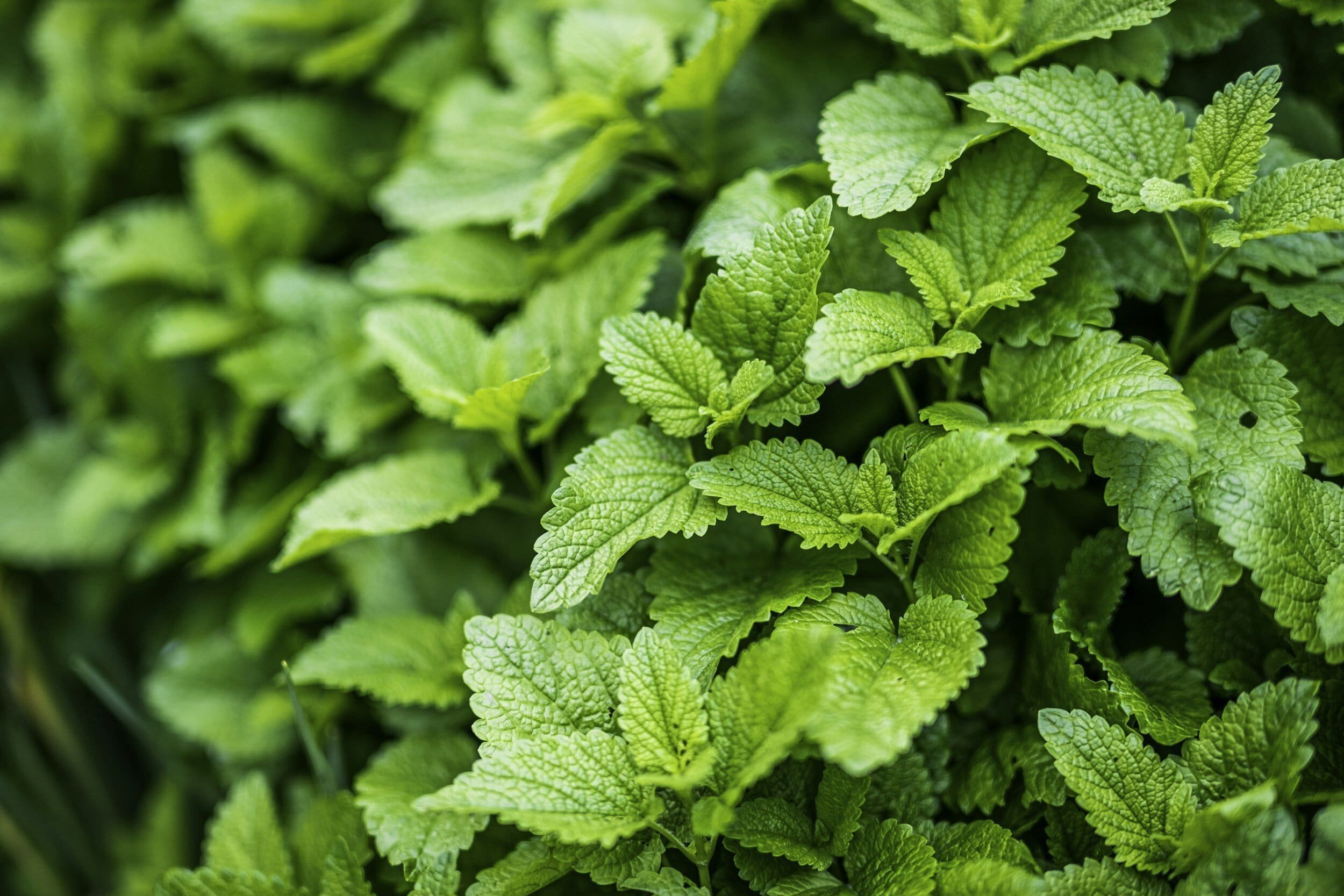Lemon Balm
(Melissa officinalis)
Originates from the Mediterranean region. It has become widely naturalized and is cultivated in gardens and farms around the world. Lemon Balm can tolerate a wide range of conditions but I have seen it naturalize and happiest in damp, partial shade conditions. It is one of our favorite plants to grow for herbal tea at Sacred Blossom Farm.
Lemon Balm (Melissa officinalis) has a delightful aromatic, lemony fragrance and dry, soft, almost heart shaped leaves. Flowering in clusters along the stem Lemon balm can grow up to 2.5 feet tall
Lemon Balm leaves impart a mild lemon flavor and are used to enhance the taste of salads, sauces, desserts, and beverages. Lemon Balm makes a delightful herbal tea, either by itself or as a blend. This herb makes a feature in our Angel, Dream and Immunity herbal teas. It is most prominent in our Turtle herbal tea (promotes Calm and Wellbeing*) which is 40% Lemon Balm.
Lemon Balm has been traditionally used for its calming and soothing properties. It is often employed in herbal remedies to alleviate stress, anxiety, and promote relaxation. Additionally, it has antiviral properties.* Whenever I am first starting to get a cold sore I make a spit poultice out of a bit of Lemon Balm (fresh is best but high quality dry herb is fine) and put it on the corner of my mouth. Alternatively there are many ways to incorporate Lemon Balm into topical creams.
Lemon Balm contains various constituents that contribute to its aroma and properties, including:
Citronellal: This compound is responsible for Lemon Balm's lemony scent.
Rosmarinic Acid: An antioxidant with anti-inflammatory properties.
Flavonoids: These compounds contribute to the herb's medicinal properties.
Volatile Oils: Responsible for the aromatic qualities.
How to Grow Lemon Balm
Starting Lemon Balm from seed / germination: We leave a dozen of our choicest plants each season unharvested and save our own Lemon Balm seed. Originally we purchased our seed from Johnnys Seed Selected Seed. I have tried growing Lemon Balm from root divisions and I was not impressed with the resultant plant growth.
Lemon Balm can be directly seeded in the garden but that’s tough business. We start them in our greenhouse April 7th in 128 cell trays, two to three seeds per cell and then diligently thin to one plant per cell. Lemon Balm takes 7 - 14 days to germinate at 65 - 70 degrees. The seeds need light to germinate so we surface sow them, then water with a water breaker that half buries the seeds. Then we cover the trays with row cover and water again. The row cover helps maintain ideal, warm moist conditions and makes sure the seeds don’t get dislodged in future waterings.
It takes 6 weeks from seeding for the plant to develop 4 true leaves at which point they are ready to harden off and plant out after frost. A home gardener may want to up-pot them at this point and let them get bigger before setting out.
Planting Lemon Balm: Using our water wheel transplanter, we plant Lemon Balm 18 inches between plants and 30 inches between rows. Our Lemon balm transplants are short little guys, so we really make sure we don’t plant them too deep (or shallow). We sneak a row of direct seeded California Poppy in between our Lemon Balm rows. The California Poppies are harvested about 70 days later, just as the Lemon Balm is really starting to fill in the space.
Caring for Lemon Balm Plants:
Lemon Balm is easy. They’ll grow fast and big in rich, damp soil. I have seen naturalized Lemon Balm plants grow 4 feet tall but in damp, partial shade! In our field they are bushier and only get about 22 inches tall. They are susceptible to powdery mildew and leaf spot if kept too wet. They don’t like it to be too hot and dry and will grow a lot better in Maine than Arizona. You will see a marked difference in leaf size and flavor based on growing conditions.
I like to keep my Lemon Balm field a little on the dry, under-fertilized side because it makes for “hotter” , more astringent and much more medicinally potent herb. Nitrogen will make those leave GROW but won’t up the medicinal quality. The youngest leaves will turn purplish if low in phosphorus.
For the home gardener Lemon Balm leaves can be picked a few at a time, when the plant is starting to get big. The plant is most potent when it is just starting to think about flowering. I keep a close eye on it and when the growing top is starting to get long, before flowering, we harvest. Morning is best time of day to harvest. The aromatic quality seems to vary widely from day to day so we make sure we taste the plant before harvesting.
We take about 2/3rds of the plant each harvest. We get 2 harvests the first year; the first 75 days after planting (early August) and the second 60 days later. We get three cuttings in the second and third years. We hope to get three years out of our Lemon Balm field but that doesn’t always happen. We get harsh winters on our farm in Mondovi, WI and if there is no snow to insulate the ground or if we harvest the Lemon Balm too hard or too late in the season the plants won’t over winter. Home gardeners should mulch their Lemon Balm but that is impractical at farm scale.
The leaves of Lemon Balm are frost sensitive but the plant bounces back nicely if it does get nipped.
These Lemon Balm plants have survived early spring and are well on their way to your tea cup
Drying Lemon Balm
Lemon Balm is a great plant to dry for herbal teas. Cut herb loses moisture easily and dries very quickly. It’s essential oils seem particularly volatile and will easily burn off if heated too high. We make sure to keep the temperature around 90 with good ventilation and to toss the herbs after 12 hours of drying. They are dry after 24 hours or less. To maintain top quality we take special care not to over heat or over dry this herb.
A home scale gardener can hang bunches of herbs in a well shaded ventilated area and they will dry just like that. It is important that the herbs continuously dry (do not reabsorb moisture during the drying process) but so long as this happens, it is okay if they take several days to dry. Do not dry in the sun or the leaves will turn brown.
I have read that it is not possible to dry Lemon Balm well, but I know this not to be true. Lemon Balm leaves left on the plant stay tasty well into the winter - a testament to how important it is to not overheat this herb when drying.
In storage, dried Lemon Balm loses quality a bit quicker than most other herbs.
When dried and stored in ideal conditions Lemon Balm leaves will look and taste great for 2 - 3 years.
High quality Lemon Balm makes a fine herbal tea but low quality Lemon Balm, low in aromatic oils, is not not tasty or nearly as functional. Sacred Blossoms high quality herbal teas that include Lemon Balm are; Angel, Dream, Turtle, Immunity. Our friends at Four Elements also provide high quality lemon balm teas, such as; Triple Lemon Tea, Joy Love Passion Tea
Other products you can make with Lemon Balm are tinctures, topical salves, lip balm, essential oils, herbal soap, bath bombs, bug spray, and more! This versatile herb is widely applicable in many different ways.
For more information on this wonderful herb please visit the American Botanical Council or the European Medicines Agency
* These statements have not been evaluated by the Food and Drug Administration. This product is not intended to diagnose, treat, cure, or prevent any disease.



